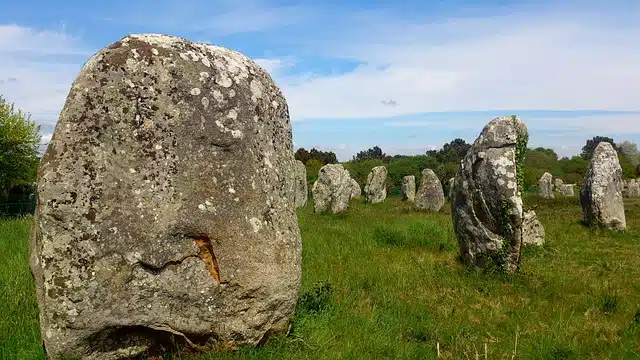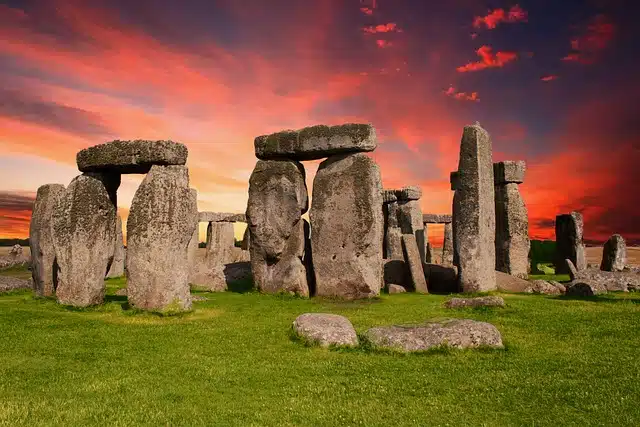
Alignments of Carnac, in France, a megalithic monument
A megalith is a monument or shelter developed in Prehistory that was made with large uncarved stones . It is possible to find megaliths of different ages and in different regions.
Overview
Anything linked to megaliths is classified as megalithic . Megaliths can be constructions made with one or more blocks of stone; tombs or funerary monuments; memories of events; or territorial demarcations, for example.
In the production of a megalith, cement was not used nor mortars were used. The prehistoric people who carried out these works used interlocking methods to lift and fix them.
Most of these structures arose in the Neolithic . This emergence is associated with major social changes, such as the transition from hunting-gathering and nomadism to agriculture, livestock farming and a sedentary lifestyle.
In the early 1900s, some scholars claimed that all megaliths belonged to a kind of common culture that had spread to different parts of the world. This is related to the anthropological current called diffusionism , which supports the link between a material culture and a single civilization, from which it has radiated to the rest of the sites where similar creations are appreciated. However, through modern dating, science ruled out this theory with respect to megaliths, not even in smaller areas within the same continent.
Classification
There are different types of megaliths. The dolmens , in this framework, are formed with stones nailed vertically into the ground and others that, supported horizontally on them, function as a roof. In South Korea , to mention one case, there are hundreds of dolmens in Ganghwa , Hwasun and Gochang that together form part of the World Heritage Site protected by UNESCO .
A menhir , on the other hand, is a megalith made up of an elongated stone that is partially buried vertically. Several menhirs arranged in an ellipse or circle form a cromlech , as in the case of the famous megalith of Stonehenge in England .
It should be noted that on the American continent we also find megaliths. Among them appear the stone spheres of Costa Rica .
Menhir
The aforementioned menhir is the simplest type of megalith, something that separates it from the rest, beyond its presence at Stonehenge. The stone that makes it up may or may not be carved, but never in great detail ; Failing that, it is lowered as it was found in nature. Regarding its position and placement, the intention was for it to remain upright, and the fact that some have withstood so many centuries is truly worth highlighting. Regarding its name, it is a French word that is composed of two others, whose meanings together give us "long stone", and it was coined by archaeologists in the 1800s.

Stonehenge is a clear example of a menhir
Returning to the work that a menhir can receive, beyond the engravings, some present a sculpting work that gave them anthropomorphic shapes. However, in these cases they are usually considered idols or stelae. Regarding its height, it varies greatly from one megalith to another: some menhirs are very small, but others reach more than 10 meters.
The details of the rituals in which these megaliths were used are still unknown, nor the reason why they were erected and arranged in a certain way. In this framework, the theories are many and range from those based on verified historical data to those that border on science fiction. In any case, the majority accepts that these are works of a funerary nature , since it is common to find tombs close to the menhirs.
